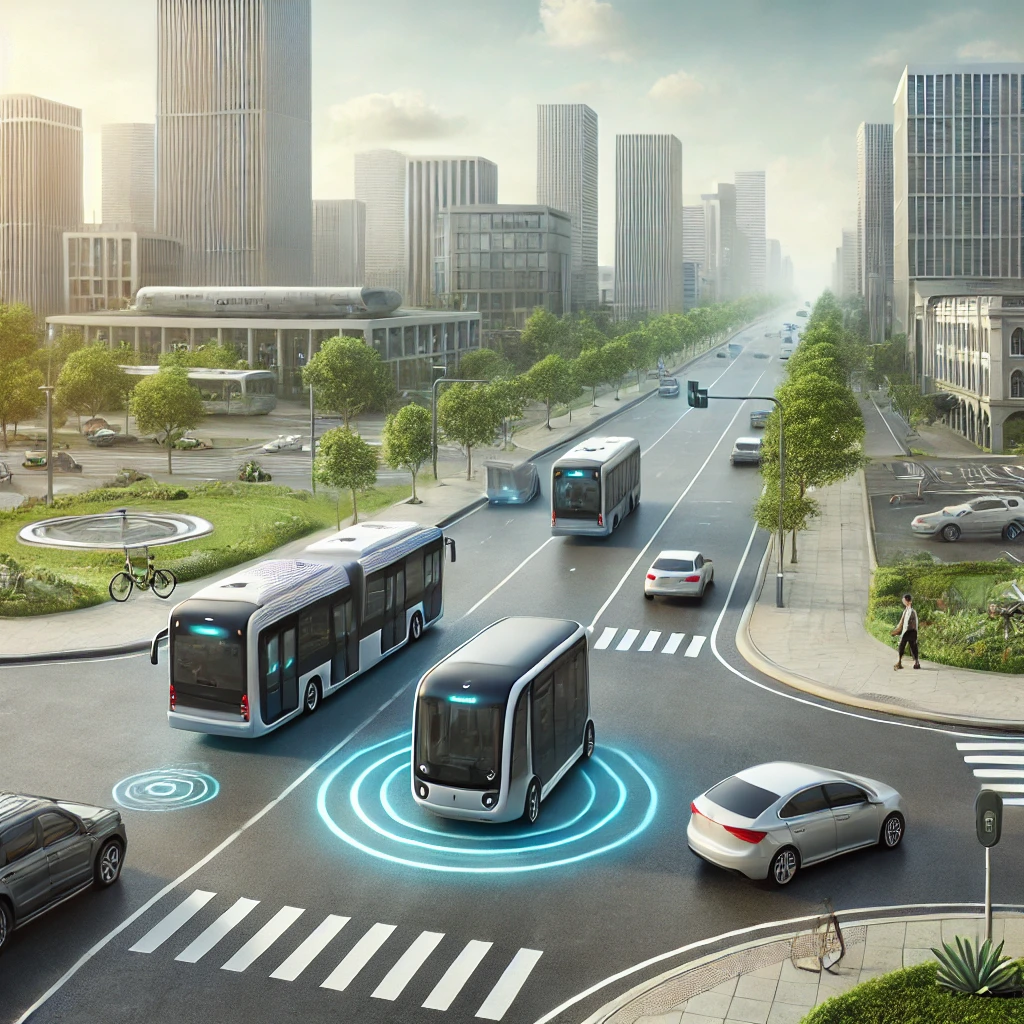Autonomous Vehicles Revolutionizing Public Transport: Reducing Traffic and Fuel Consumption
The advent of autonomous vehicles (AVs) has sparked a transformative shift in the transportation sector, particularly in public transportation services. These self-driving vehicles promise not only to reshape personal mobility but also to revolutionize how people access and use public transport. As cities around the globe grapple with growing urbanization, traffic congestion, and environmental concerns, autonomous vehicles offer a solution to some of the most pressing challenges. Their integration into public transportation systems holds the potential to reduce urban traffic, decrease fuel consumption, and enhance the overall efficiency of transport networks.
The Rise of Autonomous Vehicles in Public Transport
Autonomous vehicles, often equipped with advanced sensors, artificial intelligence, and real-time data processing capabilities, are increasingly becoming part of urban mobility solutions. These vehicles can operate independently without human intervention, relying on sophisticated algorithms to navigate roads, avoid obstacles, and follow traffic regulations.
In recent years, cities and transportation authorities have been experimenting with AVs in various forms, such as self-driving buses, shuttles, and even autonomous taxis. These initiatives have demonstrated the feasibility of using autonomous vehicles in public transportation systems to offer reliable, safe, and cost-efficient alternatives to traditional services. For example, cities like Singapore, Helsinki, and Las Vegas have conducted pilot projects for autonomous public transportation, laying the foundation for broader adoption.
Benefits to Urban Traffic Reduction
One of the most significant contributions of autonomous vehicles to public transport is their potential to reduce traffic congestion in urban areas. Human-operated vehicles are often subject to inefficiencies such as sudden stops, slow reaction times, and inconsistent driving behavior. Autonomous vehicles, on the other hand, operate with precision, maintaining optimal speeds, reducing the frequency of sudden braking, and avoiding bottlenecks caused by human error.
By integrating AVs into public transportation systems, cities can optimize the flow of traffic. For instance, autonomous buses can maintain a steady pace, stop at designated locations without causing unnecessary delays, and operate within coordinated networks that prevent congestion. Moreover, AVs can communicate with each other through Vehicle-to-Everything (V2X) technology, which allows for seamless traffic management, reducing the chances of collisions and congestion-related delays.
Additionally, autonomous vehicle systems can reduce the need for personal car ownership in urban areas. As more people rely on AV-driven public transport, the number of privately-owned cars on the road is expected to decrease, further alleviating traffic pressures. This shift from personal to shared mobility is seen as a crucial step toward reducing urban gridlock and optimizing road usage.
Impact on Fuel Consumption and Environmental Benefits
In addition to reducing traffic congestion, the integration of autonomous vehicles in public transportation can lead to a substantial reduction in fuel consumption. Traditional public transport systems often suffer from inefficient routes, stop-and-go traffic, and suboptimal driving behaviors, all of which contribute to higher fuel consumption and increased emissions.
Autonomous vehicles can optimize fuel efficiency through better route planning, consistent driving speeds, and improved vehicle coordination. By minimizing unnecessary stops and starts, AVs can lower fuel use, resulting in cost savings and reduced greenhouse gas emissions. In particular, electric autonomous vehicles offer even greater potential for sustainability, as they eliminate reliance on fossil fuels altogether. The combination of electric powertrains and autonomous driving technologies creates an eco-friendly alternative to conventional public transportation systems.
Furthermore, the ability of AVs to operate efficiently during off-peak hours without human drivers reduces energy waste and keeps public transportation systems running smoothly around the clock. This continuous availability ensures that public transport is always accessible, further reducing the need for personal vehicles and thus cutting fuel consumption on a city-wide scale.
Challenges and Considerations for Full Integration
While the benefits of autonomous vehicles in public transportation are clear, there are also several challenges that need to be addressed for their widespread adoption. One of the primary concerns is the infrastructure required to support AVs. Cities need to invest in smart infrastructure, such as advanced traffic management systems, road sensors, and real-time data networks, to fully integrate autonomous vehicles into existing transport frameworks.
Moreover, there are regulatory and safety concerns surrounding the deployment of autonomous vehicles. Ensuring that AVs meet stringent safety standards is critical to gaining public trust and ensuring that the transition to AV-driven public transport is smooth and secure.
Additionally, there is the question of workforce displacement. Autonomous vehicles will likely reduce the need for human drivers, which could have economic implications for those employed in the transportation sector. Policymakers will need to consider strategies to mitigate these impacts, such as retraining programs and new job opportunities in AV maintenance and management.
Future Outlook: Autonomous Vehicles Transforming Urban Mobility
Despite these challenges, the future of autonomous vehicles in public transportation looks promising. As technology continues to advance, we can expect more cities to adopt AVs as part of their transport solutions. The benefits, from reduced traffic congestion to lower fuel consumption, are too significant to ignore. Furthermore, as electric vehicles become more widespread, the environmental advantages of AVs will only grow, making them a key player in the fight against climate change.
In the coming years, the combination of autonomous vehicles and public transportation will likely reshape how cities manage mobility, creating more efficient, eco-friendly, and accessible systems for all. By embracing this revolution, cities can not only address immediate challenges but also pave the way for a sustainable and connected future.
Conclusion
The integration of autonomous vehicles into public transportation represents a major milestone in urban mobility. These self-driving systems offer numerous advantages, including reducing traffic congestion, decreasing fuel consumption, and enhancing transportation efficiency. While challenges remain in terms of infrastructure, regulation, and workforce adaptation, the potential benefits are immense. As more cities adopt autonomous technology in their public transport networks, the promise of smarter, greener, and more accessible urban transportation will become a reality, driving forward the future of mobility for generations to come.
Autonomous Vehicles Revolutionizing Public Transport: Reducing Traffic and Fuel Consumption
Recommended Post
Solid-State Batteries: The Future of Safer Longer-Range Electric Vehicles
